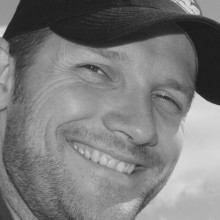Client: Gemeente Amsterdam
How can we help the future leaders of Amsterdam to discover their leadership style? The city of Amsterdam wanted an answer to that question. They asked us to design leadership training in game form as part of a larger leadership programme. That day had to be energetic, connect and above all give insight into the leadership style of the participants. Not by taking a test, but by playing!How does leadership training work?
The group will be divided into 4 teams of 4 people each. In total the group plays 4 rounds. They are all responsible for building a new neighbourhood. For each round, each team is responsible for building part of that district. A team always consists of 1 leader and 2 or 3 team members. The teams and roles rotate so that everyone is the leader at least once.
In addition to the common goal and the team goal, each individual also has his or her own goal: scoring points. They receive these points during the moment of reflection after each round. Each team reflects together on the different elements of leadership; what worked and what didn’t?
Game dynamics
Where normally we as game designers want to make the player experience as ‘smooth’ as possible, we have now consciously chosen to look where it ‘scour’. Precisely then natural behaviour comes to the surface and that is exactly what we want to make visible. For each element of leadership, we have formulated the behaviour that goes with it. We then used mechanics that bring exactly that behaviour to the surface.
For example, there are more tasks to be done than there are roles and there is time for them. Also, the teams really need to produce something physical. They have to fold the houses that will be built in the neighbourhood. This takes time, causes hassle and also means that team members have to physically sit down at a different location to carry out their task. As a result, the leader loses overview and is faced with various considerations. Are you going to cooperate? Are you going to steer very much, or are you going to let go and give yourself autonomy.
Testing, testing and oh yes… testing
Anyone who has ever made a game knows it: to design the right dynamics you have to test it. That’s the only way to find out whether what you’ve come up with works. With other types of designs, testing is also important, but different. A game is only ‘something’ when you play. You only see how it works when there is interaction with the players. We call that a second order design problem. You don’t design the solution itself, but you design something from which the solution emerges.
In this leadership training, too, we immediately made a prototype in the first week and started testing it. From there we iterated and tested until we saw the dynamics we had in mind.
Timo de Blok, Programme Manager for Developing Learning Lines:
‘It is nice to see that participants enter the action mode in a very short time. There is no time to wait. As the pressure increases, there is energy in collaboration, or total miscommunication.
That is the most important thing of all: during the day, all the authentic behaviour that we wanted to see emerged. But that is only one part. The follow-up discussion after each round aims to make the implicit explicit; that’s where the real learning takes place. The participants always indicated that they recognised many patterns in themselves as a result of this leadership training and were surprised that this became visible so quickly during this game. In short, we have a great tool in our hands to make learning fun!
Contact
Are you curious about what we can or can do for your organisation? Contact us or call 020 33 00 111









